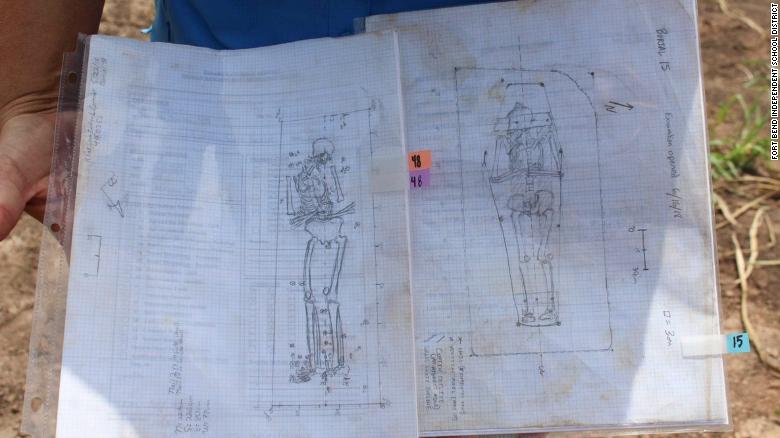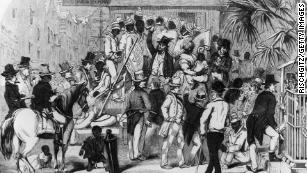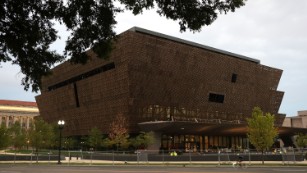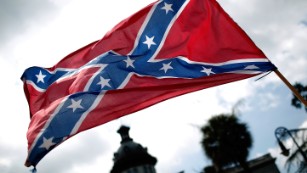Nearly 100 bodies found at a Texas construction site were probably black people forced into labor -- after slavery ended
By Jessica Campisi and Brandon Griggs, CNN
Updated 1:04 PM ET, Thu July 19, 2018
(CNN)Months after a Texas school district broke ground on a new technical center, archaeologists there made a surprising discovery: the long-buried remains of 95 people.
The first remains were discovered in February in Sugar Land, a suburb southwest of Houston. And now officials have learned who these people probably were -- freed black people forced to work in convict labor camps.
For over a century, these graves were underground and untouched. But the finding that they likely held the remains of slaves, which researchers announced Monday, highlights an era that's largely forgotten in history -- a time when slavery was illegal, but many blacks were essentially still enslaved.
The Sugar Land property is owned by the Fort Bend Independent School District, which is building its new technical school on the land.
"It's a remarkable opportunity for our community and our school district to learn much more about the history of our local region," Superintendent Charles Dupre said in a statement.
The site's archaeological project manager agrees.
"It's a rare opportunity," Reign Clark of Goshawk Environmental Consulting told CNN. "We'll be telling the story of what it was like to live here, work here, and, in some cases, die here."
How they were found
It started with a hunch.
Reginald Moore took an interest in historical cemeteries after working as a Texas state prison guard in the 1980s. He no longer works at the prison, but he's still a community activist.
One of his main focuses: getting people to recognize the abuses of the Sugar Land convict-leasing system, in which prison inmates were forced into labor.
"I felt like I had the duty to be an advocate for them and to speak from the grave for these people," Moore told CNN.

Researchers' drawings of the remains. The slaves were overworked and malnourished.
Moore is the caretaker of another cemetery in Fort Bend County: the Imperial Farm Cemetery, which is nestled behind a shopping center off the highway. Near the cemetery is the home of the school district's new James Reese Career and Technical Center.
So when construction on the Sugar Land school's center started last fall, Moore told officials that other cemeteries might be nearby.
"He has documented and provided a lot of information about the history of that cemetery. He has a lot of ideas where the burials could've been," said Chris Florance of the Texas Historical Commission, which has played an advisory role in the project.
What they found
The bodies were each buried in individual wooden caskets. Of those analyzed so far, all but one are men. Researchers say they could have been as young as 14 and as old as 70.
They were probably buried between 1878 and 1910, Clark said.
Despite the passage of time, researchers can tell that the workers were malnourished or sick and faced huge physical stress when they were alive.
Clark said there's lots of evidence that they were doing very heavy labor that, for some, began at a young age.
"We can tell from the state of the bone and muscle attachment features that these were heavily built individuals. Some bones were misshapen by the sheer musculature and labor," Clark told CNN.
It's no surprise in Texas
Moore wasn't the only one who wasn't shocked at the discovery. Florance said his commission took a role in the project knowing a find like this could happen.
"It's not uncommon in Texas," he told CNN.
What was shocking, though, was how hard the graves were to find. The commission had done assessments before construction began, Florance said, but the land was so altered over the years that it was hard to know anything would be there.
"One of the biggest problems with old cemeteries is that the markers might have gone away. There's no surface evidence," he said.
The are 177 cemeteries in Fort Bend County, but there could be as many as 50,000 cemeteries across the state. Only 1,706 have a historic Texas cemetery designation.
The 'Hellhole on the Brazos'
President Lincoln's 1863 Emancipation Proclamation said all slaves who lived in states that had seceded from the US were free. The 13th Amendment, ratified in 1865, formally abolished slavery in all of the US.
That doesn't mean forced labor didn't continue.
After the Civil War ended in 1865 and slaves were outlawed, the Texas economy dropped into a deep depression. Businesses needed a new form of cheap labor. So they resorted to prisons.
The convict-leasing system was essentially slavery all over again. Prisoners were taken from state prisons and leased to private businesspeople who worked the laborers as hard as they could for the cheapest price. And the less food, water and shelter these workers got, the less they cost.
"One 14-year-old was 6 feet tall," Clark told CNN. "This population was hand-selected."
Sugar Land's economy had thrived on sugar cane plantations, which largely relied on slave labor. So two Confederate veterans, Edward Cunningham and Littleberry Ellis, signed a contract with the state in 1878 to lease the state's prison population.
Conditions were so bad that the city got itself a nickname: "Hellhole on the Brazos."
"It had the worst reputation of all the prison farms in Texas," sociologist Richard Vogel told CNN affiliate KTRK.
What happens next
Digging up and analyzing all 95 graves takes serious time -- likely more than nine months' worth of work.
Each unburial takes up to two days, plus up to eight hours of cleaning and up to 15 hours for analysis, the school district said. So far, they've dug up 50 graves and analyzed more than 22, Clark said.
Once they're dug up, a team of forensic archaeologists will look for more information on the corpses, such as their medical conditions and how they died. After that, the school district will work with the state's historical commission to figure out where to rebury them.
Moore wants to get a memorial for the group as a form of restitution.
"I'm speaking for those who didn't have a voice, then and now," he told CNN. "I felt like I was called to set them free."
Correction: A previous version of this story incorrectly stated the Emancipation Proclamation freed all slaves. The proclamation said all slaves held in states that had seceded from the United States were free. The story also corrects the date of the Emancipation Proclamation.
end quote from:
https://www.cnn.com/2018/07/18/us/bodies-found-construction-site-slavery-trnd/index.html




















No comments:
Post a Comment